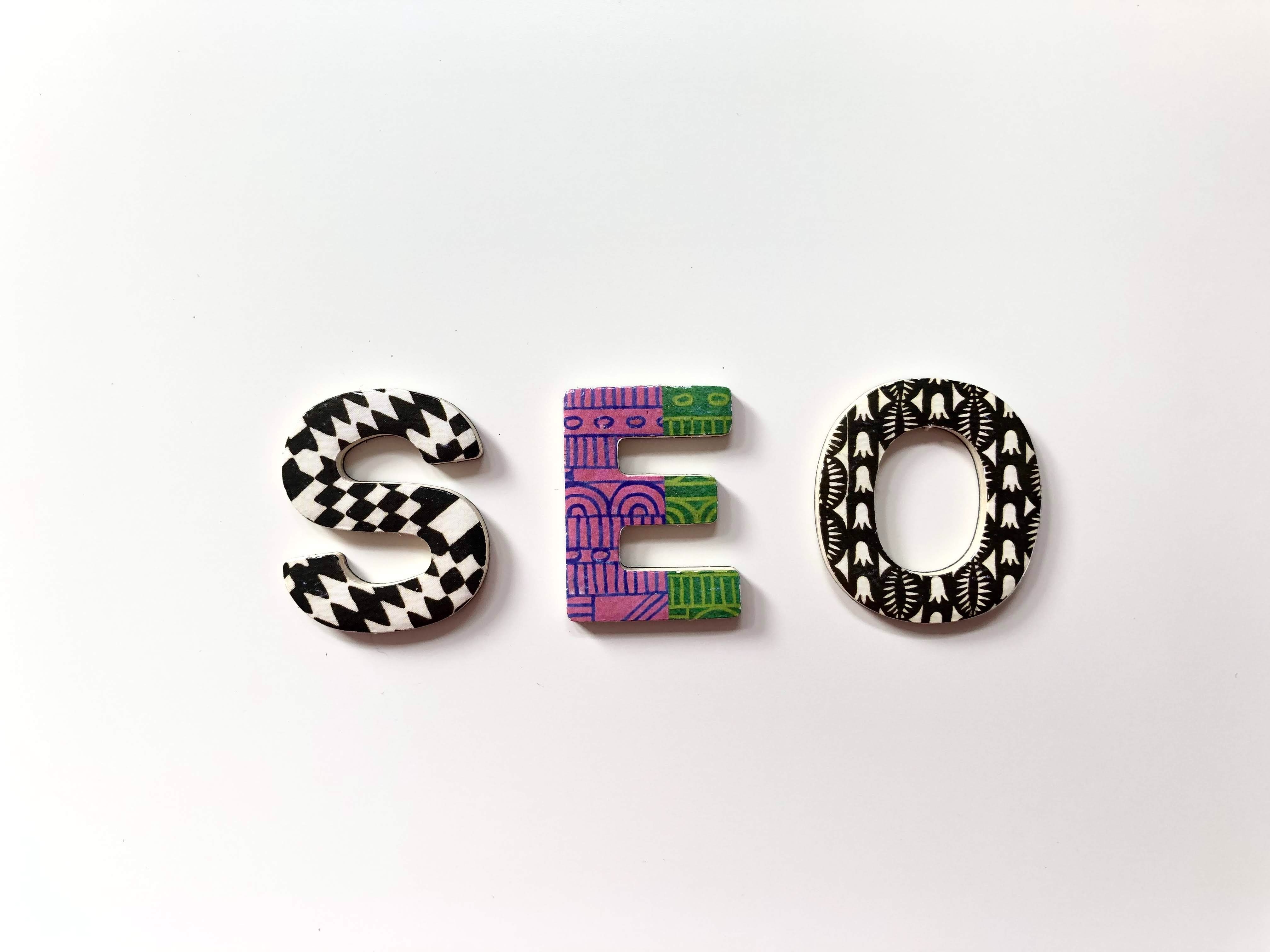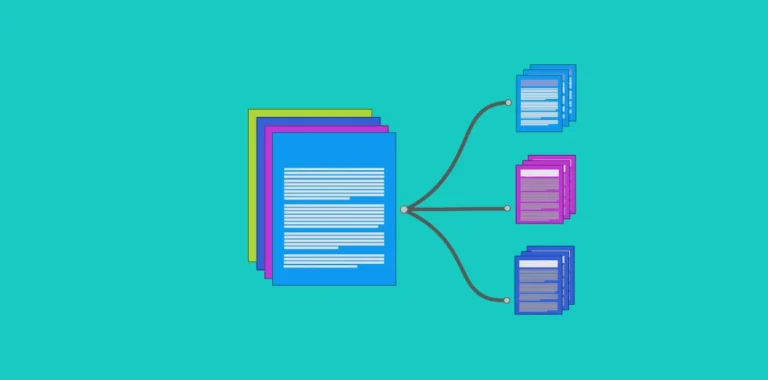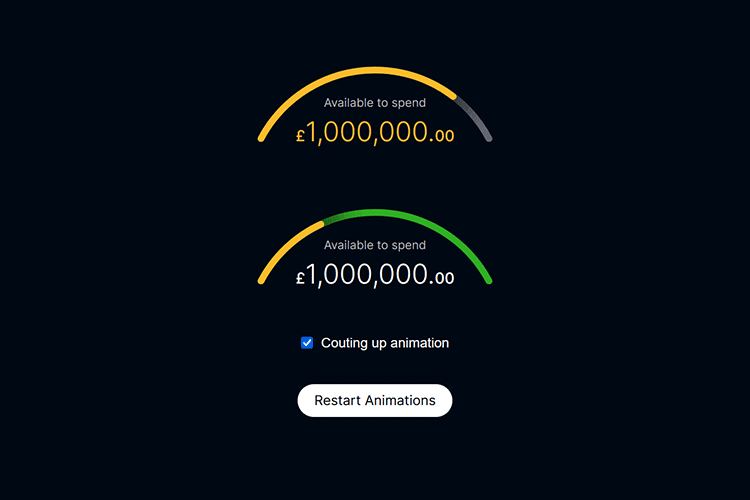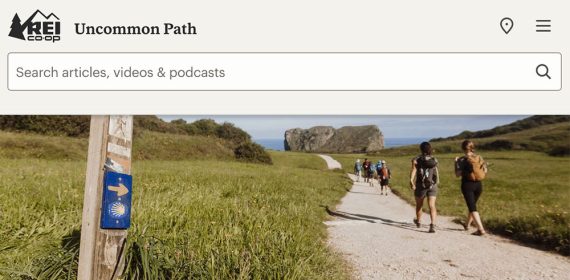
Now more than ever, having a quick and well-optimized website is essential. We’ll walk you through the actions you need to follow in this tutorial to optimize your SEO, speed up your website, and increase performance.
How Does User Experience Affect Website Speed?
User experience is greatly impacted by website performance. According to research, 47% of users anticipate a website to load in two seconds or less, and visits decrease by 16% for every additional second of load time.
Additionally, websites that load slowly hurt search engine optimization. Google has acknowledged that one of the criteria used to rank websites is site speed. Thus, having a slow-loading website will not only irritate visitors and drive them away, but it will also lower your search engine rankings.
Optimizing your website is a crucial step in improving its speed, functionality, and search engine ranking. You may enhance user experience, raise search engine ranks, and eventually increase website traffic by optimizing your website. This in-depth manual will guide you through the essential tactics and methods for efficiently optimizing your website.
Website optimization: What is it?
Making the required changes and enhancements to different parts of your website to guarantee optimal performance is known as website optimization. Implementing SEO best practices, increasing performance, and speeding up websites are all part of this optimization process. You can draw visitors, improve user experience, and rank higher in search engine results by optimizing your website.
Acceleration Optimization
Evaluating the Speed of Your Website
Take some time to use PageSpeed Insights or GTmetrix to analyze the speed of your website. These tools offer insightful analysis of the variables influencing the loading speed of your website along with suggestions for optimizing them.
Enhancing Your Photographs
To minimize the size of your image files without sacrificing quality, optimize and compress them. For quicker load speeds, use applications or plugins that compress photos automatically when they are uploaded.
Cutting Down on HTTP Requests
Reduce the amount of files your website loads to cut down on the amount of HTTP requests it generates. Combine and minify the JavaScript and CSS files, and get rid of any extraneous scripts or plugins that lead to an excessive number of requests.
Caching and Compression
Turn on gzip compression, which reduces the size of the files on your website before they are sent to the user’s browser. This speeds up loading times and drastically lowers file sizes. Moreover, use caching techniques to save static files locally on the user’s device, eliminating the need to retrieve them from the server on every visit.
Performance Optimization
Analyze the Performance of the Website
Use tools like Google Analytics to track and analyze the performance of your website on a regular basis. Monitor performance indicators like page load time, bounce rate, and conversion rate to pinpoint areas in need of development and assess how well your optimization efforts are working.
Enhancing the Architecture of Your Website
Make sure the structure of your website is logical and clear so that both users and search engines can easily browse it. For simpler navigation, group content into pertinent categories and subcategories, use breadcrumbs, and create descriptive, SEO-friendly URLs.
Redirects and Broken Links are Reduced
Redirects can have a negative influence on user experience and speed, therefore reduce or eliminate them from your website. Check for broken links on a regular basis and update them to save users from annoying 404 errors.
Making SEO-friendly changes
Enhancing Your Metadata and Titles
Website optimization: What is it?
The practice of enhancing your website’s functionality, speed, and SEO to improve user experience and rank higher in search results is known as website optimization. It entails a number of methods and approaches meant to maximize distinct facets of your website and guarantee that it is completely optimized to satisfy search engine and user demands.
It’s critical to assess your website’s existing performance before making any speed optimizations. Tools like GTmetrix and Google PageSpeed Insights can be used for this. These tools will give you information about potential performance and speed issues with your website.
Optimizing your photos is a crucial part of optimizing for performance. Your website may run noticeably slower when it contains large, uncompressed photos. You can minimize the file size of photographs without sacrificing their visual quality by shrinking and compressing them.
Additionally, you may significantly increase the speed of your website by minimizing the amount of HTTP requests it makes. Reducing the amount of requests and improving website speed can be achieved by minimizing the usage of superfluous stylesheets, plugins, and scripts.
Caching and compression are crucial methods for enhancing the performance of websites. You can speed up loading times by setting compression, which will lower the size of files your server sends. Contrarily, caching enables your website to save temporary copies of particular web pages, making them easily accessible to users and minimizing the number of times they must make requests to the server.
You may improve user experience by making sure that your website loads quickly and efficiently by putting these speed optimization tactics into practice.
💡 Main Takeaway: To improve user experience and search engine results, website optimization entails increasing website speed, performance, and SEO. Improving the speed of a website requires employing strategies like caching, compression, minimizing HTTP requests, and image optimization.
Acceleration Optimization
Search engine rankings and user experience both heavily depend on a website’s speed. Unsatisfied visitors and high bounce rates can result from a website that loads slowly. You must assess your website’s present speed performance and pinpoint areas for development in order to optimize it for speed.
- Analyze the Speed of Your Website: To evaluate the speed of your website, use tools such as GTmetrix or Google PageSpeed Insights. These resources offer insightful analysis and recommendations for improving performance.
- Optimizing Your Images: Your website may load much more slowly if it has large image files. Compressing your photos can optimize them without sacrificing quality. Instead of using PNGs, think about employing formats like JPEG or WEBP. Use lazy loading strategies as well to load images only when necessary.
- Minimizing HTTP Requests: Every component on your website, including scripts, stylesheets, and graphics, needs to load via a different HTTP request. Reduce the amount of queries by employing browser caching, CSS sprites, and merging several files into one.
- Compression and Caching: You can speed up page loads by significantly reducing the size of your HTML, CSS, and JavaScript files with Gzip compression. Make sure you activate browser caching so that returning users can access your website more quickly by saving specific resources to their devices.
The main takeaway is that speed optimization is essential for both enhancing search engine rankings and offering a flawless user experience on your website. Your website can perform much better overall and load faster by using strategies like compression and caching, optimizing images, minimizing HTTP requests, and speed performance analysis.
Examine the Speed of Your Website
One of the most important steps in optimizing your website for improved performance is to analyze its speed. It gives you insights into how to speed up your site and assists you in identifying potential weak points. When assessing the speed of your website, keep the following important things in mind:
- Website Speed Testing Tools: To assess the present speed performance of your website, use internet tools such as GTmetrix, Pingdom, or Google PageSpeed Insights. These tools offer thorough assessments that point out areas in need of improvement.
- Page Load Time: Find out how long it takes for the whole content on your website to load. Try to have your page load in less than three seconds, as studies have shown that users will often leave sites that take too long to load. Optimize components that could cause slower loading times, such as big graphics, heavy scripts, and an abundance of plugins.
- Content Delivery Network (CDN): To disperse the assets of your website among several servers worldwide, think about utilizing a CDN. CDNs assist in lowering latency and enhancing load times for users from various geographic areas.
- Website hosting: Verify that the servers your website will be hosted on are dependable and performant. If the limits of shared hosting are causing your speeds to lag, think about switching to a dedicated or virtual private server (VPS).
- Mobile Optimization: Since mobile visitors frequently have varying internet connection speeds, assess your website’s mobile performance independently. Utilize resources such as Google’s Mobile-Friendly Test to evaluate the responsiveness and speed of your mobile website.
- Get Rid of Render-Blocking Resources: To give priority to the rendering of visible content, reduce or postpone render-blocking resources like CSS and JavaScript files. This speeds up loading times and increases overall efficiency.
💡 main Takeaway: Improving the overall performance of your website requires analyzing its speed. Utilize tools like as GTmetrix and PageSpeed Insights to find areas that need work, speed up page loads, and guarantee a smooth user experience.
Enhancing Your Photographs
Images are essential for improving your website’s aesthetic appeal. They can, however, considerably slow down the loading performance of your website if they are not well optimized. Here are some essential techniques for improving your image optimization for a quicker and more effective website:
- Compress and Resize: Make sure to compress photographs without sacrificing quality before putting them on your website. Use plugins or image compression programs to minimize the file size without sacrificing quality. Additionally, as larger images take longer to load, resize images to the precise dimensions necessary by your website.
- Choose the Correct File Format: In order to optimize your photographs, you must choose the right file format. In general, PNG works better for graphics, logos, and images with transparent backgrounds, while JPEG works best for photos and complicated images. For huge photos, stay away from GIFs as they are clunky and can cause your website to load more slowly.
- Make Use of Lazy Loading: Use lazy loading strategies to increase the speed of your website. By ensuring that images load only when the user scrolls to see them, lazy loading helps to speed up the initial load time of the website. This method works particularly well for long-scrolling pages, image galleries, and websites with lots of images.
- Use responsive design :Use responsive design to make sure your website is adaptable and appropriately displays images on a variety of screens and devices. This is essential to deliver the best possible user experience because badly scaled images might cause slowed loading times and distorted images.
- Employ Alt Tags and meaningful File Names: Give your photographs meaningful file names that appropriately convey their information. Add alt tags as well to increase accessibility and give visually impaired people alternative text descriptions. By offering keyword-rich descriptions that search engines may crawl, alt tags also help with SEO.
A crucial component of website optimization is image optimization. Implementing lazy loading, resizing, compressing, selecting the appropriate format, adding alt tags and descriptive file names, and optimizing your website’s speed are all crucial steps in improving user experience.
💡 Main Takeaway: Improving the speed and functionality of your website requires image optimization. Some good ways to shorten load times and improve user experience include downsizing and compressing photos, selecting the appropriate file format, using lazy loading, and using alt tags and descriptive file names.
Cutting Down on HTTP Requests
Reducing the quantity of HTTP requests is essential for increasing speed and performance when it comes to website optimization. Every component of a webpage, including scripts, stylesheets, and pictures, needs to make a separate HTTP request to the server. The website takes longer to load the more requests that are required.
The following are some practical methods to cut down on HTTP requests:
- Combine and Minify Files: You can cut down on requests by combining several CSS or JavaScript files into one. These files can be made even smaller by minifying them and deleting extraneous characters and comments, which speeds up loading times.With CSS sprites, several pictures are combined into a single image file and particular portions are displayed by using CSS background positions. As a result, fewer picture requests are made, and page load times are accelerated.The approach known as “lazy loading” loads images or other items only after they are visible in the viewport. This speeds up the website’s initial load time and enhances its overall perceived performance.
- Insert Small Resources: It could be advantageous to insert tiny CSS or JavaScript files straight into the HTML code. This reduces the requirement for a second HTTP request, which speeds up the rendering process.
- Employ Caching: Tell browsers to save static resources, such as CSS files or pictures, locally by using browser caching. Since the browser won’t need to request those resources again, subsequent visits to the website should load faster.
- Content Delivery Network (CDN): By using a CDN, you can shorten the time it takes for users to access your website by distributing its static contents among several servers located throughout the world. In addition, this lessens the quantity of queries sent to the origin server.
These techniques will help you drastically cut down on HTTP requests, which will improve user experience and speed up website loading times.
💡 main Takeaway: To maximize the speed and performance of a website, fewer HTTP requests must be made. To efficiently reduce HTTP requests and improve website performance, combine and minify files, use CSS sprites, use caching, employ lazy load components, inline small resources, and make use of a CDN.
Caching and Compression
Compression and caching are two essential techniques for maximizing the speed and functionality of a website. You may make your website files load faster by using compression techniques to reduce their size. Contrarily, caching is keeping static copies of your web pages on the server or in the user’s browser to facilitate faster access on subsequent visits.
You can use programs like Gzip, which compresses files before sending them to the user’s browser, to apply efficient compression. This speeds up load times by cutting down on the amount of time it takes to transfer the files. To further optimize the size of your CSS and JavaScript files for quicker loading, you can minify them by eliminating extraneous spaces, comments, and line breaks.
Conversely, caching enables you to save frequently used resources on the user’s browser or the server, like photos, CSS, and JavaScript files. In this manner, the browser or server can get the cached resources rather than having to fetch them again when a user returns to your website. This lowers server load and speeds up page loads.
You can use content delivery networks (CDNs) in addition to browser caching to store static resources across several servers located all over the world. With the use of CDNs, users of your website can access these resources from the server that is nearest to them, reducing latency and enhancing performance.
You may greatly improve your website’s speed and performance by including compression and caching techniques in your optimization approach. Users will benefit from speedier load times, which will enhance their engagement and user experience.
- Use programs like Gzip to compress files
- Minify JavaScript and CSS files
- Make use of content delivery networks (CDNs) and browser caching.
- Use CDNs to distribute static resources among several servers.
“Tips like compression and caching are essential for increasing the performance and speed of websites. You can guarantee quicker load times and a better user experience by lowering file sizes and keeping cached resources.”
💡 Main Takeaway: Website speed and performance enhancement requires compression and caching. Website owners may greatly improve load speeds and user experience by saving cached resources and lowering file sizes.
Performance Optimization
One of the most important aspects of website optimization is website performance. Enhancing user experience and improving search engine rankings can be achieved by guaranteeing seamless functionality and quick loading times. When optimizing for performance, keep the following crucial steps in mind:
- Assess the Performance of the Website:
Use resources like Google PageSpeed Insights or GTmetrix to undertake a comprehensive examination of the functionality of your website. These tools offer insightful information about how to improve the performance of your website.
- Enhancing the Organization of Your Website:
Make sure the structure of your website is easy to navigate and is clear and structured. Make use of logical subcategories and categories to aid consumers in finding information fast.
- Reducing Broken Links and Redirects:
Broken links and redirects can have a detrimental effect on the functionality of your website. To guarantee a positive user experience, routinely check for any broken links and remove any superfluous redirects.
“Optimizing your website for high speed requires eliminating broken links and redirects, as well as having a well-optimized site structure.”
💡 main Takeaway: Improving the site structure, reducing broken links and redirects, and assessing the performance of your website are all necessary for performance optimization. Improved search engine rankings and a seamless user experience are two benefits of these actions.
Analyze the Performance of the Website
One of the most important aspects of website optimization is website performance. You can take action to improve the overall user experience and discover areas that require improvement by assessing the performance of your website. When assessing the effectiveness of your website, keep the following important things in mind:
- Loading Speed: Your website’s loading speed is one of the most crucial performance indicators. A website that loads slowly might irritate visitors and increase their bounce rate. Utilize resources like as GTmetrix or Google PageSpeed Insights to assess the loading performance of your website and pinpoint any areas that require optimization.
- Responsiveness: It’s critical to make sure your website is responsive and adjusts smoothly to various screen sizes given the rising popularity of mobile devices. To guarantee that your users have a flawless experience, test your website across a range of devices and screen sizes.
- User-Friendly Navigation: Make sure your website’s navigation is easy to use and intuitive by reviewing its structure. Ensure that key pages are easily accessible and that your menus are simple to use. Users will have a better, longer-lasting experience on your website if it is structured effectively.
- Error Handling: Examine your website for any broken links or error pages. Broken links might hurt your SEO efforts and the user experience. To ensure a seamless user experience, keep an eye out for broken links on your website and take quick action to fix them.
- Performance Testing: To find bottlenecks and potential improvement areas, regularly conduct performance testing. This can involve monitoring general performance as well as stress and load testing. You may improve user experience and increase website performance by proactively identifying performance issues.
💡 main Takeaway: Improving the speed, usability, and general user experience of your website requires regular performance evaluations. To guarantee a high-performing website, regularly evaluate elements including loading speed, responsiveness, navigation, error handling, and performance testing.
Enhancing the Architecture of Your Website
Search engine optimization and user experience both depend on a well-structured website. It is easier for users to explore and find the information they need when your website is correctly arranged. Furthermore, your pages will be more effectively crawled and indexed by search engines, improving their visibility in search results.
To improve your site’s structure, follow these crucial steps:
- Organize your material: To make it easier for readers to find what they’re looking for, divide your content into appropriate parts or categories. To make content easier to read, use bullet points and subheadings.
- Establish a logical hierarchy: Arrange your pages such that your homepage is at the top, then the major parts, and finally any blog posts or individual pages that are nested within those sections. Users and search engines alike will find it simpler to comprehend the relationships between various pages as a result.
- Simplify your navigation: Make sure the navigation on your website is clear and easy to use. Provide a menu that is available from every page and is clear and consistent. To make exploring easier, give your navigation links meaningful descriptions and think about adding a search box.
- Employ breadcrumbs: To give users a visual representation of their journey across your website, include breadcrumbs into the design of your website. In addition to making navigating easier, breadcrumbs also make your website’s hierarchy and structure more understandable to search engines. Optimize the structure of your URLs by giving each of your pages a clear, easy-to-use URL. Steer clear of long, complicated URLs that contain extraneous parameters. Instead, characterize each page’s content with succinct and pertinent keywords.
- Internal linking: You may aid search engines in finding and indexing your information by creating links between pertinent pages on your website. Additionally, it offers consumers more avenues to investigate connected subjects. Incorporate organic internal links into your content to boost SEO and the user experience overall.
💡 Main Takeaway: Improving search engine visibility and user experience requires optimizing your site’s structure. You may make a well-structured website that is simple for people and search engines to explore by arranging your material, putting in place a logical hierarchy, simplifying navigation, employing breadcrumbs, optimizing URL structure, and adding internal links.
Redirects and Broken Links are Reduced
Redirecting as little as possible and repairing broken links are essential components of website SEO. Redirects occur when a URL changes to another URL, resulting in an extra request and perhaps slowing down the rate at which a website loads. Conversely, broken links are those that direct users to error or nonexistent pages, which detracts from user experience and harms search engine optimization.
You can take the following actions to reduce website redirection and fix broken links:
- Examine Your Redirects: To begin, look for any superfluous redirects on your website. Determine whether there are any redirect chains or separate redirects that can be combined into one. You may increase your website’s loading speed and efficiency by eliminating pointless redirection.
- Resolve Broken Links: To find any broken links on your website, perform routine link audits. To identify broken links, make use of resources such as third-party link checkers or Google Search Console. Once those links have been found, make the required corrections or updates. You have two options: either change the link to a functional page or delete it completely.
- Use 301 Redirects: It’s important to correctly reroute old URLs to new ones when you make changes to your website’s structure or URLs. Make sure users and search engines are seamlessly redirected to the new location by using 301 redirects. Make sure you update any external resources or internal links that still point to the outdated URLs.
- Check for Broken Links: It’s important to keep an eye out for any new broken links on your website even after you’ve fixed the old ones. Crawl your website frequently and configure automated warnings or notifications to promptly find and fix any broken links that may arise. By taking this proactive stance, you can preserve a positive user experience and avoid any bad effects on your SEO.
Redirects are minimized, broken links are fixed, and your website performs better overall, improving user experience and helping your SEO efforts.
💡 important Takeaway: Two crucial phases in website optimization are reducing redirection and mending broken links. You may enhance user experience, search engine optimization, and site performance by cutting down on pointless redirection and routinely checking for and repairing broken links.
Making SEO-friendly changes
One of the most important aspects of website optimization is SEO optimization. You may raise your website’s exposure, organic traffic, and search engine results page rankings by putting good SEO tactics into practice (SERPs). To make your website SEO-friendly, follow these essential steps:
- Enhancing Your Meta Descriptions and Titles:
- Create intriguing names that appropriately sum up each page’s content.
- Strategically incorporate pertinent keywords into your titles.
- Craft compelling meta descriptions to persuade people to click through to your search results.
- Content Optimization:
- Find high-performing and relevant keywords by conducting keyword research.
- Produce excellent, educational, and captivating content that is in line with user goals.
- Include keywords in your content’s headings, subheadings, and body text in a natural way.
- Make sure your picture alt tags are descriptive in order to increase accessibility and give search engines more information.
- Enhancing the Internal Link Architecture:
- Provide an intuitive internal linking structure that is both clear and logical to navigate.
- Use appropriate anchor text to describe the page that is connected.
- Verify that no internal links are pointing to broken or dead-end pages and that they are all operational.
- Making Your Photos SEO-Friendly:
- Reduce the size of your image files to speed up the loading of websites.
- Make sure your image alt text and file names are clear and contain pertinent keywords.
- Use image sitemaps to facilitate the understanding and indexing of your photographs by search engines.
Keep in mind that SEO optimization is a continuous process, so it’s critical to frequently assess the effectiveness of your website and make the required modifications to strengthen your SEO efforts.
💡 main Takeaway: To boost exposure, organic traffic, and rankings in search engine results pages (SERPs), optimizing your website for SEO include providing high-quality content, improving internal link structure, optimizing titles and meta descriptions, and optimizing pictures.
Enhancing Your Meta Descriptions and Titles
Meta descriptions and titles are essential for SEO optimization of your website. These components give consumers and search engines alike crucial information that helps them comprehend the purpose of your webpage. The following are some essential tactics for improving your meta descriptions and titles:
- Create attention-grabbing titles: Your page title should draw readers in and appropriately summarize the content of your website. Include pertinent keywords organically, and don’t exceed the suggested character count of 50–60 characters for the title. To make it more interesting, use strong language and phrases that call for action.Compose enlightening meta descriptions. In search engine results, meta descriptions are brief summaries that appear beneath the page title. They ought to offer an intriguing sneak peek at your material that tempts visitors to click. Maintain a clear, succinct, and educational tone while including pertinent keywords in meta descriptions that are no longer than 160 characters.
- Pay attention to user intent: Recognize the purpose of the user’s search and tailor your meta descriptions and titles accordingly. Click-through rates can be greatly increased by meeting the user’s expectations and attending to their requirements directly in the snippet.
- Use schema markup: Give search engines more information about the material on your website by utilizing schema markup. Using structured data to mark up your titles and descriptions can improve your content’s exposure in search results by assisting search engines in determining the relevancy of your content.
- Update and optimize often: Make sure your meta descriptions and titles appropriately represent the material on your website as it changes over time. Finding areas for improvement with your website’s search engine ranking might be facilitated by routinely tracking its performance.
You can increase the visibility of your website in search results and encourage readers to go through to your pages by optimizing your titles and meta descriptions. This will increase traffic and engagement.
💡 main Takeaway: Create interesting, educational snippets that match user intent to optimize your titles and meta descriptions. You may raise click-through rates and increase the visibility of your website by routinely updating and tweaking key components.
Getting Your Content Optimized
The optimization of your content is a critical component of website optimization that has a significant impact on user experience and search engine optimization. A variety of tactics and strategies are used in content optimization to make sure that the information on your website is both search engine optimized and valuable to your target audience. When you are optimizing your content, keep the following important steps in mind:
- Perform Keyword Research: To begin, find relevant keywords and key phrases that your target audience frequently uses to find information about your topic online. Investigate popular search terms with keyword research tools, then thoughtfully insert them into your content.
- Produce Informative and Entertaining Content: Concentrate on producing well-organized, entertaining, and educational content that speaks to the needs and preferences of your intended audience. Make sure the information in your post is thorough, unique, and offers insightful analysis and practical answers.
- Optimize Your Title Tags and Meta Descriptions: Search engine results pages (SERPs) largely rely on title tags and meta descriptions to get users to click on your website. Create captivating meta descriptions and names that appropriately convey the information on each page and contain pertinent keywords.
- Use Heading Tags: To organize your material and improve its readability for both users and search engines, make use of heading tags (H1, H2, H3, etc.). When applicable, use header tags with your target keywords to emphasize the significance of particular parts or topics.
- Optimize Image Alt Text: Not only may images improve your website’s aesthetic appeal, but they also present a chance for SEO optimization. Employ insightful alt text that incorporates pertinent keywords to aid search engines in deciphering the significance and context of your photos.
- Include Internal Linking: Increasing website navigation and content optimization can be achieved by incorporating internal linking. To direct readers to other pertinent pages on your website, incorporate pertinent internal links within your text. This makes it easier for search engines to comprehend the organization and connections between the many pages on your website.
- Update and Improve Your Content Frequently: Keep your content current and relevant by frequently adding new material, extending already-existing content, or repurposing previously written content. Frequent updates inform search engines that your website is current and active, which might raise its search engine rating.
Keep in mind that content optimization is all about giving your audience something of value while making sure search engines can quickly comprehend and assign a ranking to your material. You may improve the content of your website in terms of visibility, relevancy, and general performance by putting these methods into practice.
💡 Important Takeaway: Increasing your
Enhancing Your Internal Link Architecture
When it comes to SEO and website optimization, internal linking is essential. You can optimize user experience, improve navigation, and raise search engine rankings by carefully connecting the pages on your website. The following are some essential tactics for improving your internal link structure:
- Establish a hierarchical framework by placing your homepage at the top and any other pages branched outward in a logical hierarchy. This makes it easier for search engines and site users to comprehend the connections between various website components.
- When connecting to other pages on your website, make sure the anchor text you employ appropriately conveys the content of the target page. This aids in search engine optimization and makes it clear to users where the link will take them.
- Put relevance first by including links to pages that are pertinent to the subject or information at hand. This makes each page more visible in search results by assisting search engines in understanding its context and relevancy.
- Make use of breadcrumb navigation: This gives visitors an easy way to go from the current page to the homepage. Putting this navigation element into practice makes it easier for search engines and people to understand where a page fits within your website’s overall structure.
- Optimize for mobile: It’s critical to make your internal link structure mobile-responsive due to the growing prevalence of mobile devices. Make sure that, on smaller screens, your internal links are accessible and easy to click.
SEO Expert: “Internal linking is not just about improving navigation; it’s also about bolstering your website’s overall SEO strategy.”
The main takeaway is that search engine visibility, user experience, and navigation are all enhanced by optimizing your internal link structure. In order to optimize the advantages of internal linking, use informative anchor text, give priority to relevancy, and establish a structured hierarchy.
Making Your Photos SEO-Friendly
Not only can images improve the user experience on your website, but they may also significantly affect search engine optimization. Use these best practices to make sure your photographs are search engine optimized:
- When storing your image files, give them names that are pertinent, evocative, and contain keywords associated with the image. Use a descriptive name, such as “blue-widget-product.jpg,” instead of a generic one, like “IMG_1234.jpg,” to assist search engines understand the purpose of the image and increase the likelihood that it will appear in relevant search results.
- Optimize Image Alt Text: For visually challenged people who use screen readers, alt text is the text that appears when an image cannot be loaded. Search engines use it as well to interpret what an image depicts. Don’t forget to add appropriate alt text that describes the image with pertinent keywords. To avoid keyword stuffing, though, make sure your writing is clear and pertinent.
- Resize and Compress photos: The user experience and search engine optimization of your website may suffer if it takes longer for large, high-resolution photos to load. Make care to adjust the size of your photographs to fit the specifications of your website before adding them. Additionally, to minimize file size without sacrificing image quality, employ compression programs. The speed of websites as a whole and page load times will both benefit from this.
- Include Image Titles and Captions: These elements give search engines more information about the substance of your images. Enhancing SEO and assisting search engines in determining the image’s relevancy to your content can be achieved by employing descriptive image titles and descriptions that contain pertinent keywords.
Example Quote: “As it can enhance both user experience and search engine rankings, optimizing your images for SEO is a crucial step in website optimization.” – SEO Expert
💡 main Takeaway: Using descriptive file names, improving alt text, resizing and compressing photos, and adding captions and image titles are all part of optimizing your photographs for SEO. By following these guidelines, search engines will be able to better determine how relevant your photographs are to the information on your website and its overall performance.
In summary
Monitoring the Performance of Your Website
It’s critical to often monitor your website’s performance to make sure that all of the work you put into speed, performance, and SEO optimization is paying off. Here are some essential actions to do:
- Employ Website Analytics Tools: To keep an eye on crucial data like bounce rates, conversion rates, and page load times, make use of tools like Google Analytics. You may gauge the success of your optimization efforts and pinpoint areas for improvement with the aid of these insights.
- Establish Goals: Establish precise goals for your website and in your analytics program for conversions. This will enable you to monitor the impact of your optimization tactics on sales, lead creation, and user engagement.
- Perform Regular Audits: Keep an eye on your website to find any problems that might be impairing performance. Make sure your website is responsive and mobile-friendly, check for broken links, and optimize the code.
- Track SEO Performance: Keep an eye on the visibility and search engine ranks of your website. Analyze backlink profiles, organic traffic, and keyword performance on a regular basis to find areas that could use more optimization.
- Keep Up: Remain informed about the most recent developments and trends in SEO, speed, performance, and website optimization. The success of your website may be impacted by changes in the industry, therefore it’s critical to modify and revise your methods as necessary.
You can pinpoint areas for development, gauge the success of your optimization efforts, and eventually improve both the user experience and SEO performance of your website by routinely monitoring its performance.
💡 main Takeaway: Using analytics tools to track your website’s performance, establishing objectives, carrying out frequent audits, keeping an eye on SEO performance, and maintaining updates are all crucial components of optimizing your website for speed, functionality, and SEO.
Monitoring the Performance of Your Website
Monitoring the performance of your website is one of the most crucial parts of website optimization. You can learn a lot about the performance of your website and pinpoint areas for development by tracking and evaluating important performance metrics. The following crucial data and resources will assist you in monitoring the effectiveness of your website:
- Page Load Time: Track how long it takes for each page on your website to load completely. In addition to annoying visitors, slow page loads can hurt your website’s search engine rankings. Utilize resources such as GTmetrix or Google PageSpeed Insights to evaluate the speed performance of your website.
- Mobile Performance: It’s critical to monitor how well your website performs on mobile devices given the growing popularity of mobile devices. You may assess the mobile friendliness of your website and find any possible problems with the aid of tools like Google’s Mobile-Friendly Test.
- Conversion Rates: Pay attention to conversion rates, as they show you how many visitors finish particular tasks on your website, such filling out a contact form or making a purchase. Monitoring conversion rates might assist you in locating any obstacles or optimization opportunities.The percentage of users that depart your website after only reading one page is known as the “bounce rate.” A high bounce rate could mean that readers aren’t finding your material interesting or useful. Keep an eye on this indicator to find pages that require work.
- Error Monitoring: Keep an eye out for any issues with servers, broken links, or 404 errors that might be affecting the user experience. Tools such as Google Search Console can give you information about any mistakes that are happening with your website.
You may pinpoint parts of your website that require work and make data-driven decisions to optimize your website for improved user experience and search engine rankings by routinely tracking these performance metrics.
💡 Main Takeaway: For efficient website optimization, tracking the performance of your website is essential. You may identify areas for improvement and make data-driven decisions to improve user experience and increase search engine rankings by routinely monitoring important performance metrics.
Choosing 4GoodHosting for WordPress Hosting and SEO Services is a strategic decision that can significantly benefit your online presence. Here are several compelling reasons why you should choose us:
- Reliable WordPress Hosting: We provide top-tier WordPress hosting services that offer exceptional reliability and speed. Our hosting infrastructure is optimized for WordPress, ensuring that your website performs at its best.
- High Uptime Guarantee: With 4GoodHosting, you can trust that your website will have minimal downtime. We offer a high uptime guarantee, ensuring that your site remains accessible to visitors around the clock.
- Fast Loading Times: Page load speed is crucial for user experience and SEO. Our hosting services are designed to deliver fast loading times, which can positively impact your website’s rankings in search engines.
- SEO-Friendly Hosting: Our hosting environment is SEO-friendly, allowing search engines to crawl and index your website easily. This is a critical factor for achieving high search engine rankings.
- Professional SEO Services: In addition to hosting, we offer professional SEO services to enhance your website’s visibility and organic traffic. Our team of SEO experts can optimize your site for better search engine rankings.
- Keyword Research: We conduct in-depth keyword research to identify the most relevant and valuable keywords for your business. This helps you target the right audience and improve your search engine rankings.
- On-Page SEO: We optimize your website’s on-page elements, including meta tags, headers, and content, to align with best SEO practices and improve your site’s visibility in search results.
- Content Optimization: Content is king in SEO. Our experts can optimize your content to make it not only search engine-friendly but also engaging for your audience.
- Link Building: We employ effective link-building strategies to acquire high-quality backlinks, boosting your site’s authority and credibility in the eyes of search engines.
- Local SEO: If you have a local business, we can optimize your website for local search, ensuring that you appear in local search results and on maps when potential customers are looking for your products or services.
- Regular SEO Audits: We perform regular SEO audits to track your website’s performance, identify areas for improvement, and make necessary adjustments to maintain or improve your rankings.
- Transparent Reporting: We provide transparent reporting, so you can see the progress of your SEO campaigns. You’ll have access to data and insights that demonstrate the effectiveness of our services.
- Customized SEO Strategies: We tailor our SEO strategies to your specific business goals and industry, ensuring that the efforts align with your unique needs and objectives.
- Responsive Support: Our dedicated support team is available to assist you with any questions or concerns, ensuring that you receive prompt assistance whenever you need it.
- Affordable Pricing: We offer competitive pricing for both our hosting and SEO services, making it cost-effective for businesses of all sizes to access top-notch hosting and SEO expertise.
By choosing 4GoodHosting for WordPress hosting and SEO services, you gain a reliable partner dedicated to improving your website’s performance, visibility, and search engine rankings. We prioritize your success, and our services are designed to help you achieve your online goals effectively and efficiently .
In case you have found a mistake in the text, please send a message to the author by selecting the mistake and pressing Ctrl-Enter.






